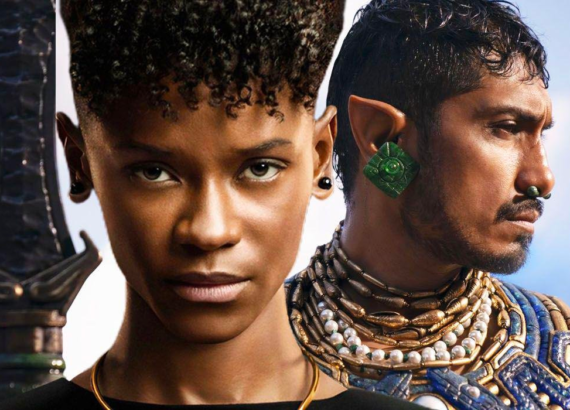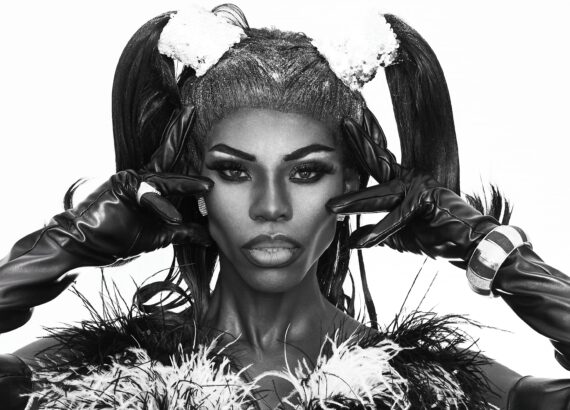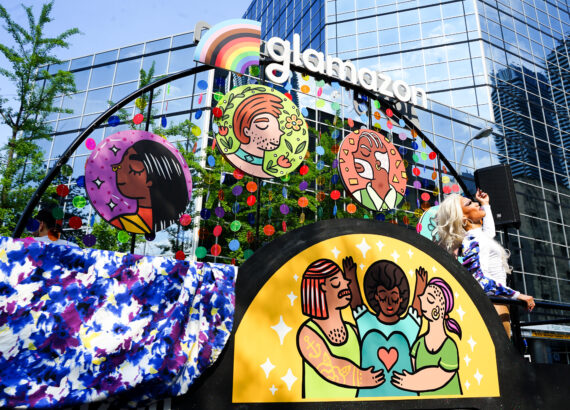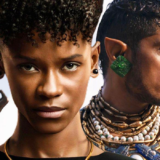How Steven Spielberg’s “West Side Story” Surpasses the Original
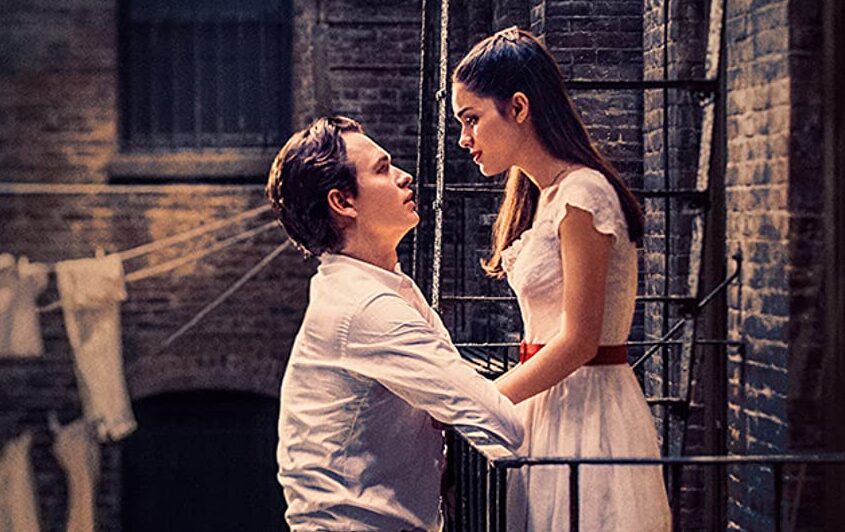
In Steven Spielberg’s 1979 over-the-top action comedy 1941, he staged a jitterbug contest with the same astonishing visual energy he brought to Jaws; kinetic camerawork, edited with precision to a lush score and loaded with dazzling acrobatic dancing. The film, one of the most debated of his illustrious career, has been mostly forgotten by mass audiences, but the jitterbug sequence foretold what West Side Story would confirm: Spielberg had a musical in him. And he just knocked it out of the park.
On a purely technical level, this film is untouchable. The art direction, editing, cinematography, and costume design are collective knockouts. The camera swoops and glides around the vast sets with the energy of the best of Spielberg’s thrillers. This is his most entertaining film in years and the best film musical in decades. In many ways, it surpasses the original film.
Creatively, the new film differs from the 1961 version in many ways; the cast sings their own vocals this time around (most of the leads in the original film had their voices dubbed by other singers). Authenticity in casting was paramount, blessing audiences with the gifts of Puerto Rican (or of Puerto Rican descent) performers.
Jerome Robbins’ original choreography has been replaced with new work by Justin Peck, which is remarkable in its roughly muscular physicality; there are a handful of specific nods to the iconic Robbins choreography, but this new interpretation emphasizes a lower centre of gravity, stressing the hopelessness and desperation of the young men in the story; these are boys who know they have no grand future to look forward to, and their gestures through dance are violent expressions of anger and futility.
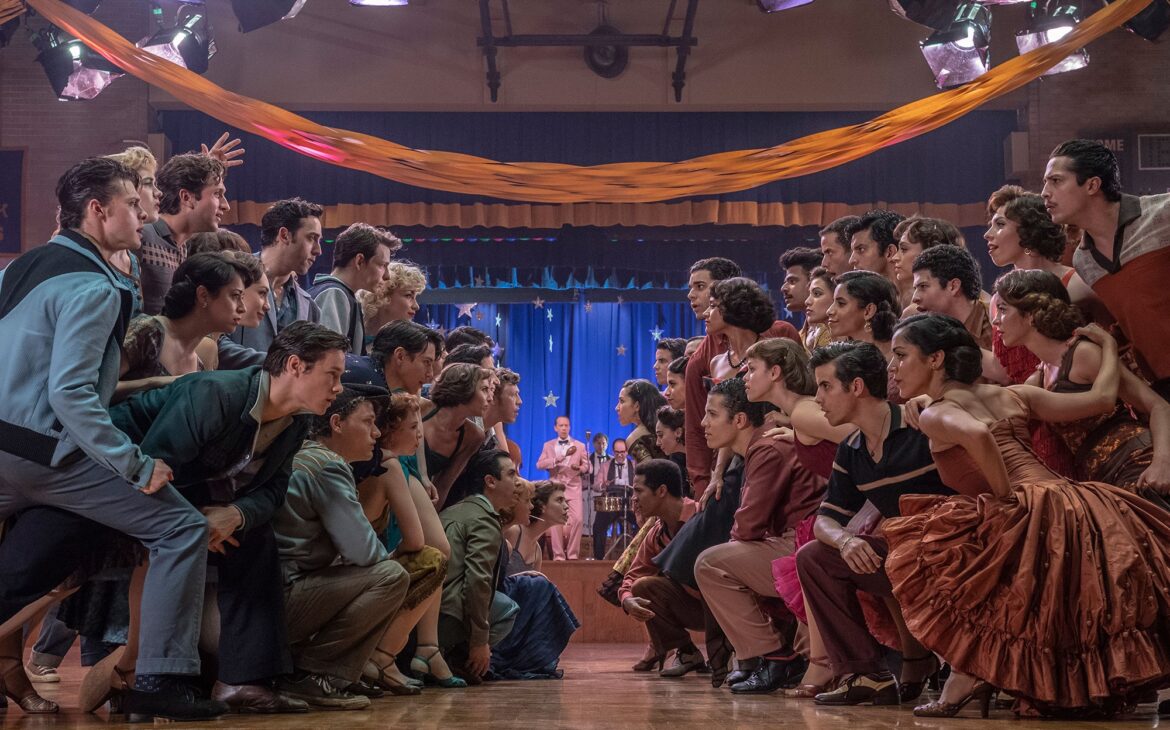
(Disney/Fox)
The film finds its most emotionally successful deviation from the original with the addition of a new character, Valentina, played by Rita Moreno who won an Academy Award for her performance as Anita in the 1961 film. Valentina replaces the character of Doc, owner of the general store. The store is still named after Doc, but Moreno plays his widow; a Puerto Rican woman who married a white man decades earlier who’s taken over the business and has known the rough gang members that roam the streets since they were little children. Valentina is the one who takes in Tony while he is out on parole, hoping to help him get a fresh start and leave his life of violence in the Jets behind.
Valentina is also given the song “Somewhere”, originally sung by Tony and Maria in the stage and 1961 film version. The song was perhaps the biggest breakout hit of the original show, a yearning and hopeful wish by young lovers for a better and more understanding world. Giving this song to Valentina changes the tone of the song’s message, there’s a weariness that is heartbreakingly conveyed through Moreno’s performance, as she looks at a photo of her deceased husband, reflecting on the parallel to what Tony and Maria are going through. The hoped-for-future Valentina once dreamed of didn’t happen, and it won’t happen for Tony and Maria’s generation; decades later, cultural and ethnic prejudices are still dividing hearts. More specifically, white supremacy is still turning people against each other. The young white boys she has watched grow up have, as she tells them, “grown up to become rapists.”
A song that once lifted hearts in its message of hope is utterly deepened by placing it in the context of a woman who, now at the last stage of her life, didn’t see the world changed for the better. The audible sobbing from the many patrons in the cinema at this moment was something I’ll never forget. She deserves another Oscar nomination.
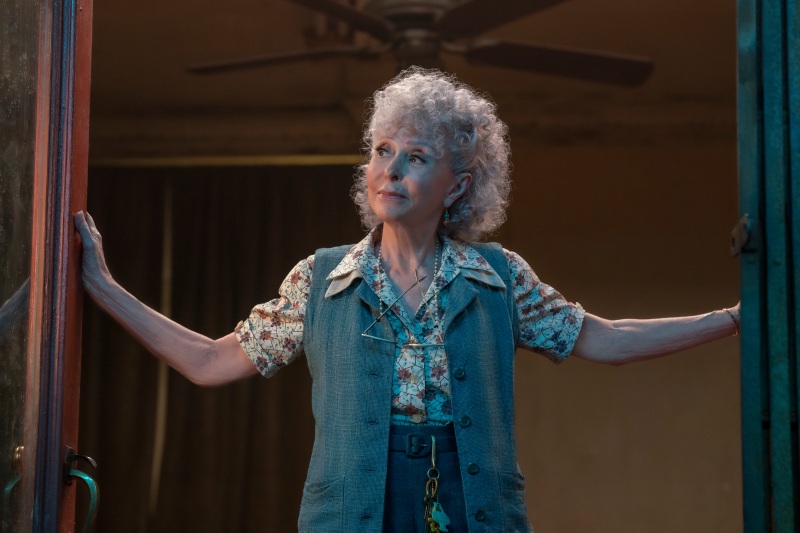
“West Side Story” (Disney/Fox)
The new film elaborates on the issues of race, culture, sexism, and classism that marked the original, aided to no end by emphasizing the poverty and destruction of the neighbourhood that is the stage for this Turf War.
Opening on the newly-demolished buildings and rubble of a neighbourhood being razed to make room for the construction of Lincoln Centre, the camera moves West and the film introduces us to the Jets and the Sharks, the rival gangs who view each other as the enemy. Even as the true enemy (money gentrifiers) remain untouchable. The metaphor couldn’t be more clear: no matter whoever wins each battle, both sides have still lost the war. When the Jets are referred to as “the last of the can’t-make-it Caucasians” and are seen singing the final verses of their self-proclaimed victory anthem atop the demolished rubble that remains of their “turf,” the intersection of racism, classism and xenophobia is perfectly illustrated.
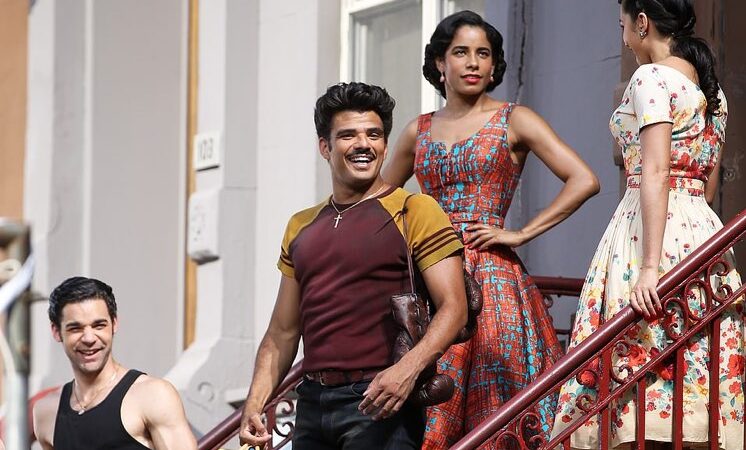
“West Side Story” (Disney/Fox)
Gender is more intelligently explored in this film, as well. The Jets have a perpetual tagalong follower known as Anybodys, usually portrayed as a tomboy, who wants to be a part of the gang, only to be dismissed as a girl who won’t ever belong. This film casts non-binary actor Iris Menas in the role, and they give us an Anybodys whose need to be accepted as “one of the guys” takes on a heartbreaking poignancy.
The Jet’s girls are also used as a window to audience members about sexual violence against women; Anita’s near-rape by the Jets late in the film is accompanied by Graziella and Velma struggling to help her, and begging the boys to leave her alone, mere seconds after having engaged in their own verbal harassing of her. It’s clear that these young women have been sexually misused by the Jets or likely other men in their life. The very moment the jeers turn to sexual violence against Anita, they seem to realize their complicity in her assault.
As for the main cast, Rachel Zegler possesses a soaring soprano and an unaffected acting style that allows her Maria to be more than some wide-eyed, passive character, she gives real agency to Maria and her naivete never comes across as cloying, but instead acts as a reminder of how optimistic a person can be before they’ve had their heartbroken.
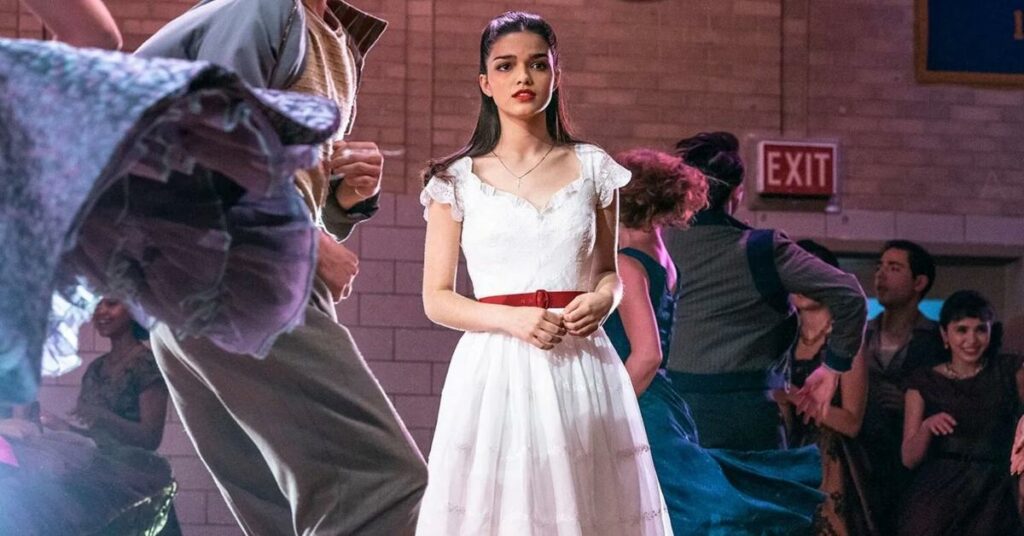
“West Side Story” (Disney/Fox)
Ariana Debose skillfully avoids playing Anita as a stereotyped “Latina spitfire”; her Anita is fiercely intelligent, fuelled not just by dreams of a new life in a new city, but by a pragmatic sense of how to make those dreams a reality. And when she dances, she lights up, her entire body becoming a vessel for Anita’s passions and life force. The camera utterly loves her, she’s the MVP of the film.
David Alvarez and Mike Faist as, respectively, Bernardo and Riff, the leaders of the rival gangs the Sharks and the Jets, do more with their characters than previous incarnations have often allowed. Alvarez in particular imbues Bernardo with true soul, wanting to protect his sister Maria from the local gringos whom he has seen treat women with sexual violence. His toughness comes from a place of wanting to protect those he loves. Faist, as Riff, makes the character pitiably tragic: A genuine loser with no prospects whose anger at a life wasted and a world passing him by has led him to assign blame for his own failings on the Black and Puerto Rican communities, people who have to work twice as hard for half as much.
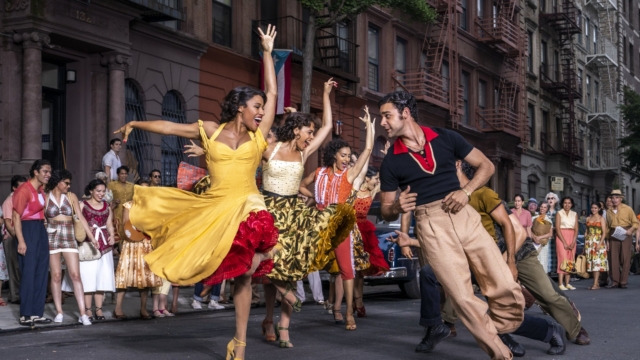
How to address Ansel Elgort, in light of the allegations against him that appeared on social media? I don’t know the answer to that, yet. In the film, he more than acquits himself; he sings beautifully, finds many touching nuances in the character of Tony (a tricky character to play because everyone around him is so dynamic and he’s written as a bit of a drip) and holds his own in a few dance sequences. I, like many others, was troubled by the accusations made against him, which came to light after the film had wrapped shooting, but I cannot support the idea of boycotting this film because of them; this film can, and should, be seen as a launching pad for the explosive talents of Rachel Zegler, Ariana DeBose, David Alvarez, Mike Faist and perhaps the most talented ensemble ever assembled in a musical film.
West Side Story is so much more than Ansel Elgort. The film is a towering achievement in not just filmed musicals, but cinema itself. West Side Story is the reason we go to the movies; to feel, deeply, a wealth of rich and powerful emotions. See it on the biggest screen you can! MOJO RATED: 9.5/10
(Disney/Fox)




